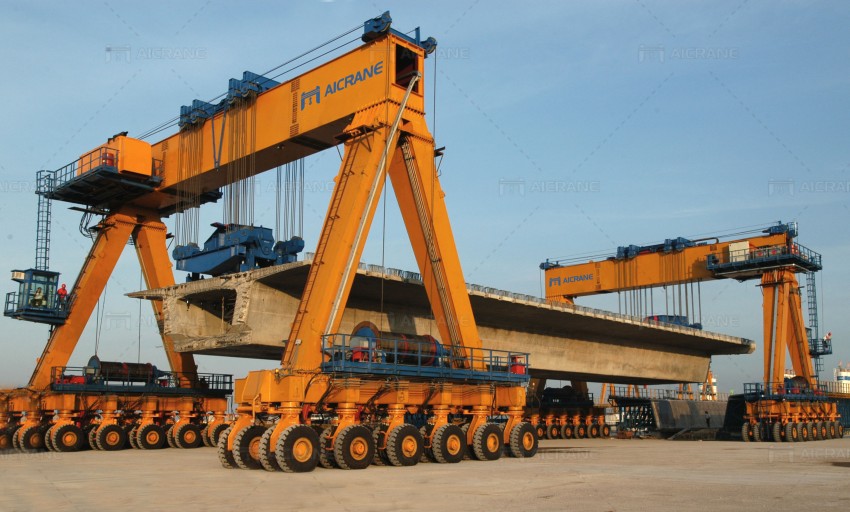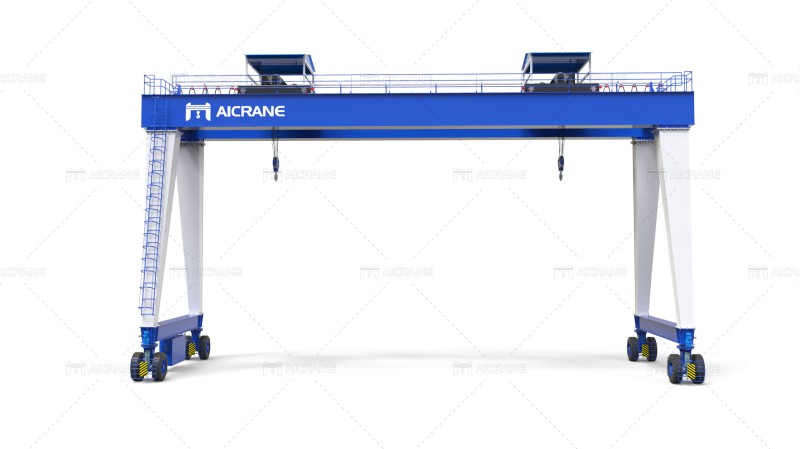In the ever-evolving landscape of industrial operations, efficiency and safety are two key pillars that businesses constantly strive to uphold. The rubber-tired gantry crane (RTG crane) emerges as a quintessential solution that embodies both these principles. With its remarkable versatility, advanced safety features, and adherence to stringent operational checks, the RTG crane has become an indispensable asset in various sectors. This article delves into the safe uses, regular checks, and protection devices associated with the rubber-tired gantry crane.

Understanding the Rubber-Tired Gantry Crane
The rubber-tired gantry crane is a sophisticated piece of machinery that combines the advantages of traditional gantry cranes with enhanced mobility and adaptability. Unlike fixed gantry cranes, RTG cranes ride on rubber tires, granting them the ability to move along tracks or designated pathways. These cranes are commonly utilized in shipping ports, intermodal terminals, and logistics hubs for the handling of containers, heavy equipment, and goods.
Safe Uses of RTG Cranes
Safety is paramount in any industrial setting, and the RTG crane’s design and operation prioritize the well-being of workers and assets. Here are some safe uses of RTG cranes:
- Clear Operating Procedures: RTG crane operators are trained to adhere to clear operating procedures that cover the entire spectrum of crane operations, from start-up to shutdown.
- Load Capacity Awareness: Operators must be fully aware of the crane’s load capacity and ensure that loads are within the specified limits to prevent accidents and equipment damage.
- Proper Ground Conditions: RTG cranes require stable ground conditions to operate safely. Ensuring that the ground is level and able to support the crane’s weight is essential.
- Safe Load Handling: Correct load handling techniques, including proper load attachment, even distribution, and secure rigging, are crucial for safe crane operation.
- Clear Communication: Effective communication between crane operators and ground personnel is essential to prevent accidents during movement and lifting operations.

Regular Checks and Maintenance
To maintain optimal functionality and safety, regular checks and maintenance routines are indispensable for RTG gantry crane systems:
Daily Inspections: Operators must perform daily pre-operation inspections to check for any signs of wear, damage, or malfunction in components such as tires, brakes, and lifting mechanisms.
Scheduled Maintenance: Scheduled maintenance, including routine lubrication, hydraulic system checks, and electrical system inspections, is vital to prevent unexpected breakdowns.
Component Replacement: Worn-out or damaged components should be promptly replaced with genuine parts to maintain the crane’s structural integrity and performance.
Safety Device Testing: The crane’s safety devices, such as overload protection systems and anti-collision sensors, should undergo regular testing to ensure they are functioning properly.
Protection Devices Enhancing Safety
RTG cranes are equipped with a range of protection devices designed to enhance safety during operation:
Anti-Collision Systems: These systems use sensors and algorithms to detect potential collisions with other cranes, structures, or vehicles, triggering automatic stops or alerts to prevent accidents.
Overload Protection: Load cells and monitoring systems prevent the crane from lifting loads beyond its rated capacity, reducing the risk of structural failure or tipping.
Stability Control: RTG cranes may employ stability control systems that monitor factors like load distribution and crane position to prevent tilting or toppling.
Emergency Stop Controls: Located within easy reach of the operator, these controls allow for immediate shutdown of the crane’s operations in case of emergencies.
The rubber-tired gantry crane represents a pivotal intersection of efficiency and safety in modern industrial operations. Its mobility, load-handling capabilities, and advanced protection devices make it a cornerstone in the movement of goods and materials. By adhering to safe usage practices, conducting regular checks, and leveraging the protective features embedded in RTG cranes, businesses can ensure that these machines continue to enhance operations while safeguarding personnel and assets.